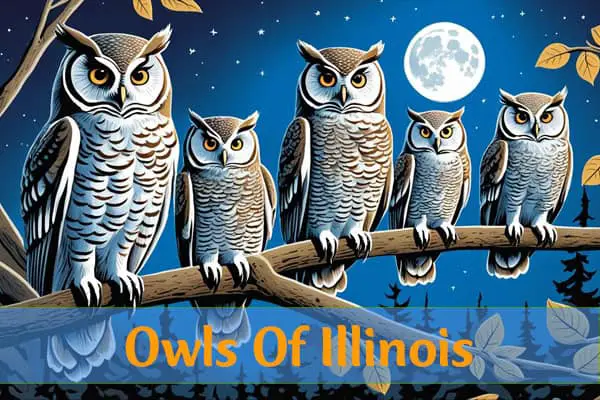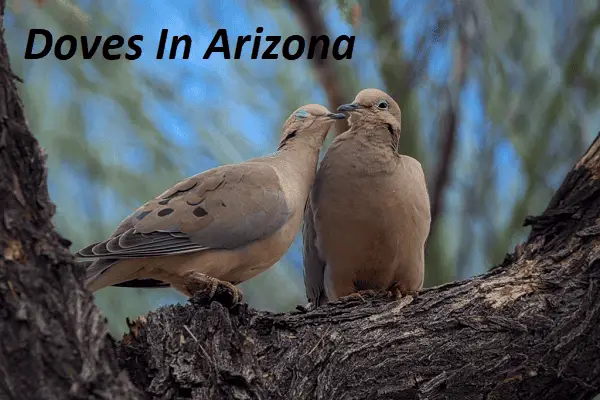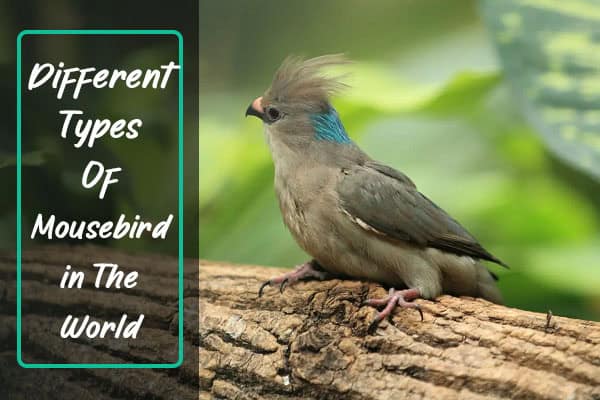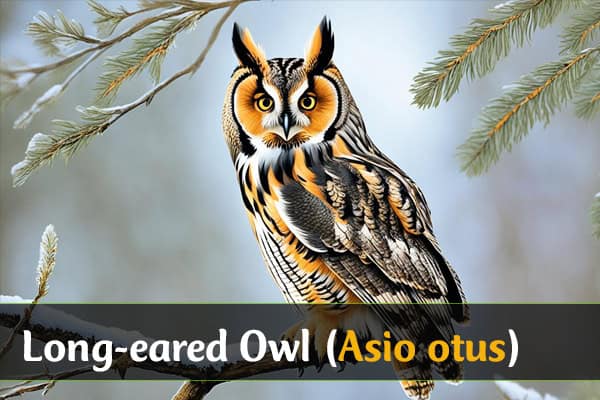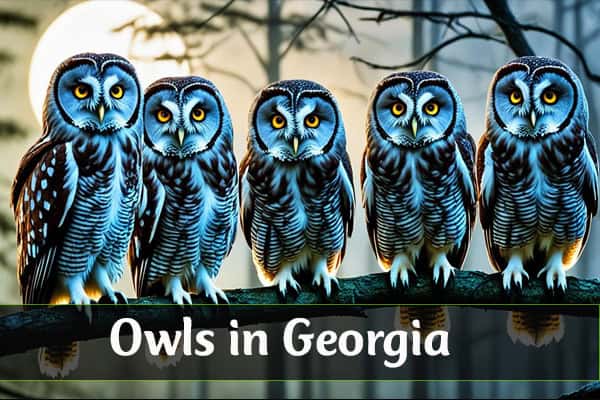9 Types Of owls in Illinois (ID Guide With Pictures)
Did you know Illinois is a hotspot for owls, with 9 out of 19 species in the U.S.? It’s a paradise for owl lovers and birdwatchers. You’ll find everything from the big Great Horned Owl to the hidden Northern Saw-whet Owl. These birds live in many places, showing off their special skills and ways of life.
Join us as we explore the magical world of Illinois owls. Discover the secrets of these mysterious night birds.
Owls in Illinois
Illinois is a haven for owls, with a wide variety of these fascinating birds. Some, like the Great Horned Owl and Barred Owl, live here all year. Others visit, adding to the state’s rich bird life.
About 4 owl species live in Illinois all year. These include the Barred Owl, Great Horned Owl, Eastern Screech Owl, and Barn Owl. The Great Horned Owl is the largest, weighing up to four pounds. It’s a fierce hunter. The Barn Owl is endangered here because of lost habitats.
During the cold months, more owls come to Illinois. You might see Short-eared Owls, Long-eared Owls, Northern Saw-whet Owls, and the Snowy Owl. These birds bring a touch of the Arctic to the state, exciting birdwatchers.
There are about 205 owl species worldwide, and 19 in North America. Illinois’ owls show the state’s rich natural heritage. From the silent Barn Owl to the fierce Great Horned Owl, these birds are crucial for Illinois’ ecosystems.
| Owl Species | Habitat | Nesting Habits | Hunting Strategies |
|---|---|---|---|
| Barn Owl | Grasslands, forests, agricultural fields, woodlots, and fields | Nests in empty crevices such as cliffs, hollow trees, and old barns | Exceptional hearing and night vision for hunting small mammals, primarily mice |
| Great Horned Owl | Forests, woodlands, and urban areas | Nests in tree cavities, abandoned hawk or crow nests, and human-made structures | Powerful talons and beak to hunt a wide range of prey, including small mammals, birds, and reptiles |
| Eastern Screech-Owl | Forests, woodlands, and urban areas with mature trees | Nests in tree cavities, including natural cavities and those created by woodpeckers | Excellent camouflage and stealth for hunting small mammals, birds, and insects |
Exploring Illinois, you can find owls in forests, prairies, or cities. With patience and a keen eye, you can see these amazing birds up close. They are a key part of Illinois’ nature, playing a big role in keeping the ecosystem balanced.
1. Great Horned Owl
- Scientific name: Bubo virginianus
- Life span: 25 – 50 years
- Size: 43 to 64 cm
- Weight: 1200 to 1600 g
- Wingspan: 91 to 153 cm
- Status: Least Concern
The great horned owl blends into its surroundings with its mottled brown and black feathers. Its “horns” are not real horns but tufts of feathers. They help in social displays for other birds.
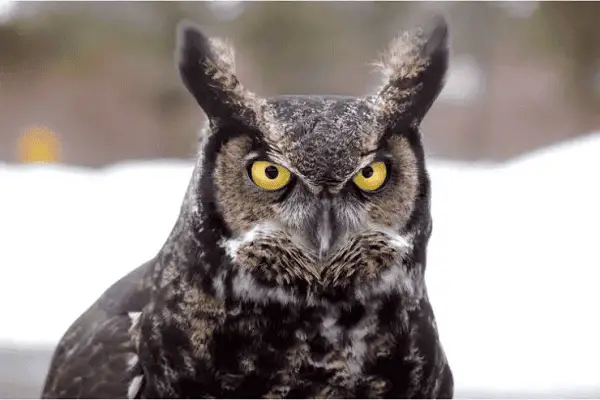
This owl is tall, up to 24 inches, with a wingspan of up to 4.6 feet. It is a powerful hunter with silent flight and sharp talons. It can catch prey from small rodents to larger animals like skunks and raccoons.
These owls are active at night, calling near dawn and dusk, especially on foggy mornings.
Diet
In Illinois, the great horned owl eats a variety of food based on the season and what’s available. They mainly eat small mammals, birds, and sometimes reptiles, amphibians, insects, and invertebrates.
They use their sharp talons and hooked beaks to catch and eat their prey. Their night vision and silent flight help them hunt effectively, making them the “fierce rulers of the night.”
Where to Find Them
To see a great horned owl in Illinois, look for them in areas with mature trees and open spaces. These include woodlands, wetlands, and prairies. They can be found all over the state, especially during the breeding season from December to March.
Some great places to see them are Shawnee National Forest, Midewin National Tallgrass Prairie, Channahon State Park, and Starved Rock State Park. Remember, they are mostly active at dawn or dusk.
2. American Barn Owl
- Scientific name: Tyto furcata
- Life span: 10 years
- Size: 34 to 38 cm
- Weight: 400 to 600 g
- Wingspan: 29 to 36 cm
- Status: Least Concern
The American Barn Owl is a special bird found in Illinois. It has a creamy-white face, chest, and belly, with pale brown wings and body. This owl is a night hunter that looks like a ghost. It helps farmers by controlling pests.
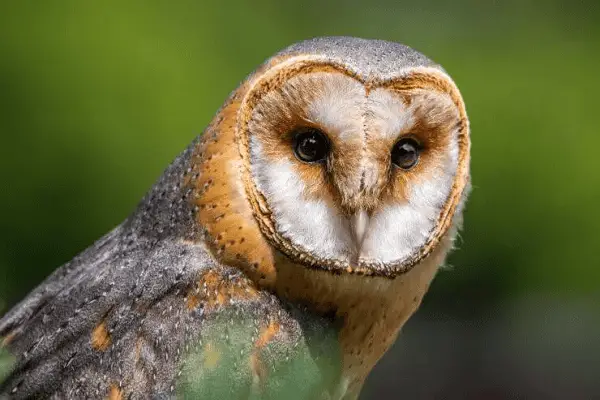
Nesting
From March to June, American Barn Owls find a home together, usually in a nesting box or tree. The male picks a spot and marks it. When the female comes, the male shows off with flying tricks before they start making babies.
With plenty of food, these owls can raise about 75% of their babies. But they are endangered in Illinois. We’re working to help them by building more nesting boxes and creating more grasslands.
Prey and Hunting Strategies
These owls eat small mammals like voles and mice at night. They use their ears to find prey by listening. Also, They need to eat a lot because they burn energy fast, and they can hunt even in total darkness.
They also eat insects and small birds, but mostly small mammals. In Illinois, they help farmers by eating rodents that harm crops. This makes them very important for the state’s farms.
We can learn a lot about the American Barn owls by studying how they live and hunt. These owls are crucial to Illinois’ ecosystem. We need to keep protecting them to keep our environment healthy.
3. Barred Owl
- Scientific name: Strix varia
- Life span: 8 years
- Size: 40 to 63 cm
- Weight: 610 to 1,150 g
- Wingspan: 96 to 125 cm
- Status: Least Concern
The barred owl lives in the deep, dark forests of Illinois and the eastern United States. They don’t migrate and stay in small areas. A study showed that 158 banded barred owls never moved more than 6 miles from where they started.
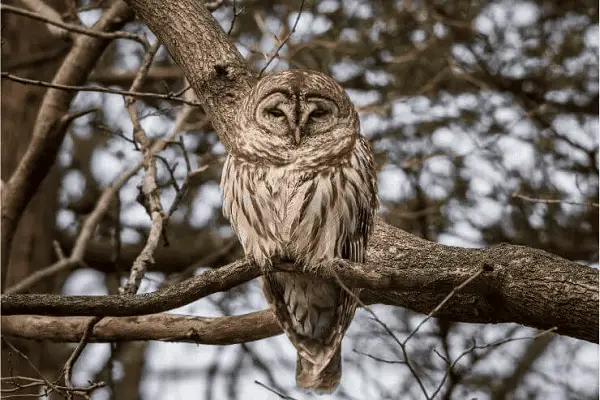
These owls are easy to spot in the Prairie State. They have a brownish-grey coat with dark stripes under their feathers. This look helps them hide in the forest.
Territorial and Monogamous Nature
Like the American barn owl, barred owls mate for life. In February, males show off to find a mate. They nod, bow, and spread their wings, waiting for the female to say yes.
After finding a mate, the owls protect their territory. They use their unique hooting to keep intruders away. This shows how much they love their deep forest home.
Barred owls are very loyal to their mates and territory. They live in mature, quiet woods. This makes them true deep forest dwellers.
The barred owl’s strong bond with its mate and territory shows its adaptability. It’s a reminder of the diverse owl species in Illinois’ forests. We learn more about these amazing birds and their unique lives.
| Owl Species | Resident or Visitor | Habitat Preferences | Key Characteristics |
|---|---|---|---|
| Great Horned Owl | Resident | Forests, woodlands, urban areas | Largest resident owl, up to 4 lbs, fierce predator |
| Barred Owl | Resident | Dense forests, wetlands | Distinctive hooting call, monogamous |
| Eastern Screech Owl | Resident | Woodlands, urban areas | Small, with distinct ear tufts, excellent camouflage |
| Barn Owl | Resident | Open fields, barns, abandoned buildings | Endangered in Illinois, ghostly white appearance |
| Short-eared Owl | Visitor | Open grasslands, prairies | Nomadic, hunt during the day and night |
| Long-eared Owl | Visitor | Coniferous and deciduous forests | Distinctive ear tufts, silent flyers |
| Northern Saw-whet Owl | Visitor | Boreal and mixed forests | Smallest owl species in Illinois, rarely seen |
| Snowy Owl | Visitor | Open tundra, fields, marshes | Majestic white plumage, Arctic native |
4. Eastern Screech-Owl
- Scientific name: Megascops asio
- Life span: 8 to 10 years
- Size: 16 to 25 cm
- Weight: 121 to 244 g
- Wingspan: 46 to 61 cm
- Status: Least Concern
The Eastern Screech-Owl is a bird that excels in camouflage. It lives in the eastern states, including Illinois. These owls have two colors – reddish-brown in the south and greyish in the north. This color change helps them blend into different woodlands.
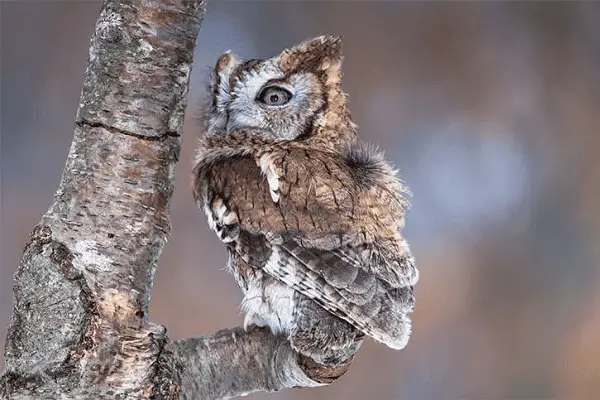
Color Morphs and Adaptations
The Eastern Screech-Owl blends into its surroundings thanks to its evolution. Its two colors help it hide in various habitats. From warm, reddish forests to cool, grey woodlands, it stays hidden from predators. This camouflage lets the eastern screech owl in Illinois sneak up on prey without being seen.
Habitat
The eastern screech owl lives in many places. It can be found in forests, cities, parks, and near rivers. They often roost in the same spots, making them easy to find. Look for them in tree holes, nest boxes, or in the sun. They start hunting at dusk.
| Characteristic | Description |
|---|---|
| eastern screech owl color | The Eastern Screech-Owl comes in two colors: reddish-brown in the south and greyish in the north. These colors help them hide in their homes. |
| eastern screech owl roosting | These owls like to roost in the same places, making them easy to find. They leave their roosts at dusk to hunt. |
The eastern screech owl is a camouflage expert. It changes color to fit its surroundings. If you’re in Illinois or a local park, watch for these amazing birds.
5. Long-eared Owl
- Scientific name: Asio otus
- Life span: 10 to 27 years
- Size: 31 to 40 cm
- Weight: 160 to 435 g
- Wingspan: 86 to 102 cm
- Status: Least Concern
In Illinois, the long-eared owl is a hidden gem. These medium-sized owls are known for their large ear tufts. They are a fascinating species that live in the Prairie State.

Distinctive Appearance
The long-eared owl’s look is all about blending in. Their brown, orange, and tan feathers match the pine trees where they rest. Their dark brown facial disks and big ear tufts make them stand out.
Roosting Behavior
Long-eared owls are experts at hiding. They often roost in thick brush and plants. They like to live in willows, cottonwoods, and tamarack trees. To find them, listen for their deep “hoo” calls.
Check Our Previous Articles:
6. Short-eared Owl
- Scientific name: Asio flammeus
- Life span: 12 years
- Size: 34 to 43 cm
- Weight: 206 to 475 g
- Wingspan: 85 to 110 cm
- Status: Least Concern
In Illinois, a unique bird species thrives in the open spaces – the short-eared owl. This owl, with a wingspan of up to 44 inches, is rare but known for its hunting skills. It lives in marshes, meadows, fields, and parks.
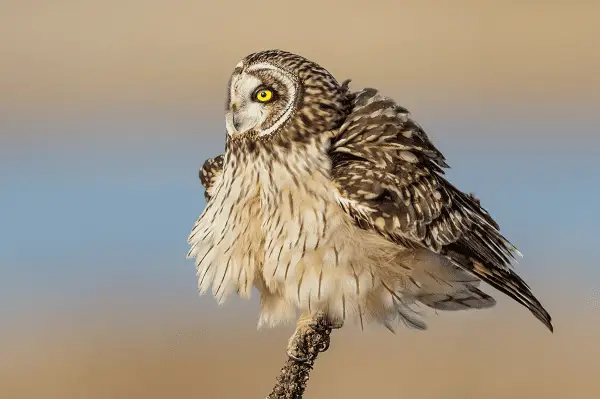
The short-eared owl stands out with its short ear tufts and yellow eyes. Its tawny feathers and hunting skills make it a sight to see. It hunts day and night, catching rodents, insects, and small birds.
This owl is known for “playing dead” when threatened. It stays still, blending into the landscape to avoid detection. Its call, a haunting “kee-yow wow,” can be heard across fields, adding to its mystique.
The short-eared owl is endangered in Illinois, with few nests found recently. Habitat loss has hurt its numbers. We need to restore habitats to help these owls survive in Illinois.
If you love birdwatching or nature, spotting a short-eared owl is rewarding. With patience, you might see this majestic bird over the fields. It shows the beauty and diversity of Illinois’ birds.
7. Northern Saw-whet Owl
- Scientific name: Aegolius acadicus
- Life span: 7 to 17 years
- Size: 17 to 22 cm
- Weight: 54 to 151 g
- Wingspan: 42 to 56.3 cm
- Status: Least Concern
The northern saw-whet owl is a fascinating and hard-to-spot bird found in Illinois. These small owls are only 8 inches long. They are known for their unique look and interesting ways.
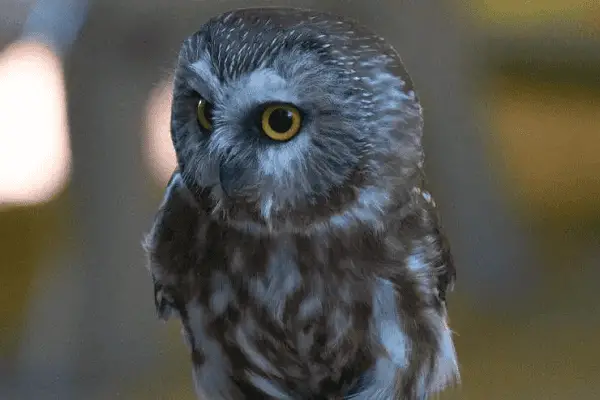
Identification and Range
Spotting a northern saw-whet owl is quite the adventure. They have a small, round body and a big, round head. Their face is white, and their eyes are bright yellow. Their feathers are brown on the back and head with white spots, white on the belly, and light brown stripes.
These owls live all over North America, including parts of Canada, the Northeast, Northwest, and Midwest, and some areas of Mexico. In winter, they may move south, reaching Texas and Louisiana.
In Illinois, not many northern saw-whet owls are seen, with only about 30 records. But, they are becoming more common. From 2010 to 2014, the Missouri River Bird Observatory caught 107 of these owls in central Missouri. Another 32 were caught at the Missouri-Iowa border over three weeks.
The female northern saw-whet owl is a bit bigger than the male. They are 17-21.9cm long and have a wingspan of 45.9-56.3cm. They weigh 75-110g. Their nests can have 3 to 7 eggs, usually 5-6. The eggs hatch in 21 to 28 days, and the young owls leave the nest at 4 to 5 weeks old. They become ready to have babies by 9-10 months.
Even though they are small, northern saw-whet owls are amazing birds. They interest birdwatchers and researchers in Illinois and all over North America.
8. Snowy Owl
- Scientific name: Bubo scandiacus
- Life span: 10 to 28
- Size: 52.5 to 64 cm
- Weight: 1706 to 2426 g
- Wingspan: 146 to 183 cm
- Status: Vulnerable
The snowy owl is a bird that visits Illinois in the winter. These birds come from the Arctic tundra. They are the second biggest and heaviest owl in North America. They have a wingspan of about 4.5 feet and weigh almost 5 pounds.
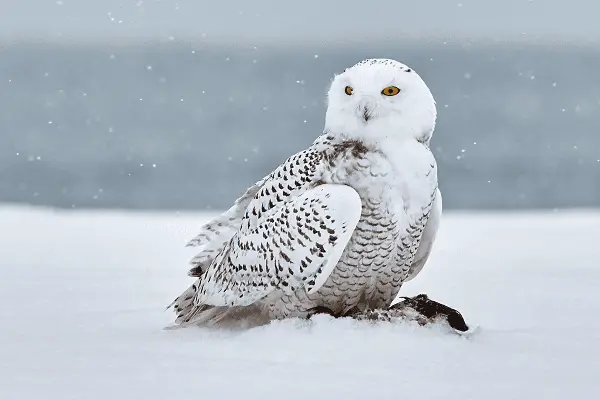
Adult male snowy owls are white to pure white with a few dark brown spots. Female and young birds are white with more dark bars. All snowy owls have a white face.
Seasonal Appearance and Adaptations
Snowy owls live in the Arctic tundra during the summer. In the fall and winter, they move south to Canada, Alaska, and parts of the U.S., including Illinois. They go where their main food, lemmings and small mammals, is plentiful.
These owls have special feathers on their feet and toes. This helps them move in the cold, snowy Arctic.
In Illinois, snowy owls are seen from late November to March. They like the shores of Lake Michigan. They are hard to see because they match the snowy surroundings.
More snowy owls are seen in some years, possibly because of an irruption. This happens every four or five years. It means more lemmings, which are their main food, leading to successful nests in the north.
9. Northern Hawk Owl
- Scientific name: Surnia ulula
- Life span: 10 years
- Size: 36 to 42.5 cm
- Weight: 300 g
- Wingspan: 45 cm
- Status: Least Concern
If you’re into birdwatching in Illinois, you might see the Northern Hawk Owl. This owl is different because it’s active during the day, not at night. It’s a diurnal raptor, which makes it stand out from other owls.
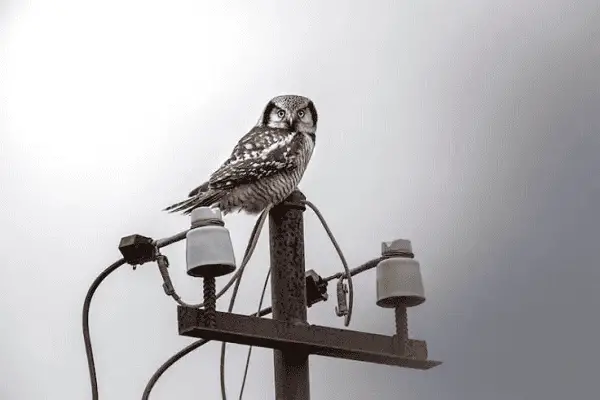
The Northern Hawk Owl looks like a hawk with a long tail. Also, It lives in the forests of Canada and Alaska but sometimes comes to Illinois in winter for food. Seeing one is rare, but it’s a treat for bird lovers. They’re known for their hunting skills and beautiful flight.
Look for the Northern Hawk Owl in Illinois during winter. They’re not common here, but seeing one is special for birdwatchers. With its unique look and rare sightings, the Northern Hawk Owl is a gem of Illinois’s bird world.

